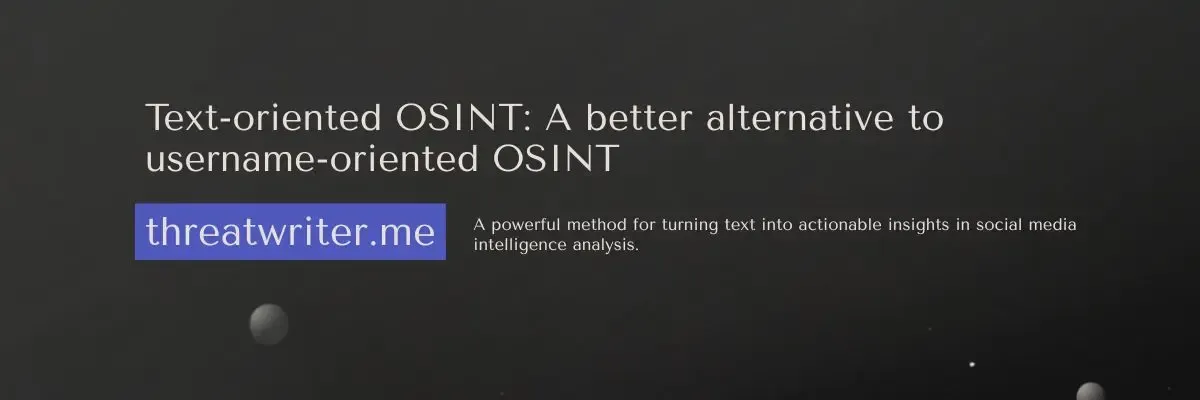Greetings everyone!
Today, I am excited to share something I have explored on my own in OSINT (open-source intelligence). If you don't know what OSINT is, you can learn about it here.
Username-Oriented OSINT
What is username-oriented OSINT?
Username-oriented OSINT involves finding a username for the target profile and then searching for it on other platforms in an attempt to hunt for other profiles associated with the target. This is also done using automated tools such as Namechk. Tools like Namechk allow you to search for different social media profiles having the same usernames, which OSINT investigators assume might be relevant to the target they are investigating. But is it so? Let's find out.
What are the drawbacks of username-oriented OSINT?
If you are using username-oriented OSINT, you might be missing a great amount of data. Why? Because not everyone maintains a consistent username across platforms, and it's highly unlikely for someone to have the same username on multiple platforms. Reasons may include:
- It might not be available on other platforms
- Some platforms add predefined characters to the username, like LinkedIn
- The platform may assign you a username automatically without user input, like Reddit
Reddit is a gold mine of intelligence, but if you sign up with a Gmail account, it automatically gives you a random username.
Now, in that case, if you were using username-oriented OSINT, you would have missed out on Reddit and many other platforms due to relying solely on this method.
Text-Oriented OSINT
What is text-oriented OSINT?
Text-oriented OSINT is a technique involving the use of text related to the target to locate their different social media profiles. The text can be anything that ties back to the target — be it things the target often says, their bio, an event they might be promoting, or any text that you think the user might have used on other platforms too. It could help you link to other profiles they use without relying on an uncertain thing like a username.
For Example: During a fraud investigation, when I tried to dig deeper and look for other profiles associated with this scammer, I came across their post with a text that was posted multiple times, calling people to their scam scheme.
It gave me a hint. I was pretty sure they would have posted it on other platforms too. So, instead of using a username to search, I used that text in the Google search bar — and BOOM!
I came across their X handle having a totally different username, which I could never have found if I had relied on username-oriented OSINT.
How to benefit from text-oriented OSINT?
To benefit from text-oriented OSINT, look for keywords that are frequently used or something you think they might have used on other profiles too. For example, a bio or caption on any special post (e.g., a birthday post or an event they are promoting).
Besides that, you can also search for the links to their found profiles in the Google search bar, like:
intext:website.com/targetuserThis can bring up the posts or comments where the target might have shared their profile with someone from another account on another platform. This way, you can find their other profile on another platform. For example, they might have shared their TikTok account on Facebook.
Using text-oriented OSINT, you would find that too. With each platform offering its own benefits, your research can be more precise and detailed using text-oriented OSINT.
Bottom Line
During social media OSINT, do not always rely on usernames to find other social media profiles associated with the target. Not everyone uses the same username across different platforms. Sometimes, using a caption, bio text, or the link to the profiles also helps find another profile associated with the user — which could not have been possible through username-oriented OSINT.



Comments
Post a Comment